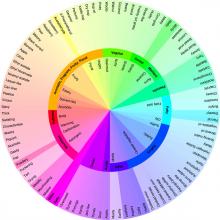This is a small primer about judging beer. It's an entry level practical guide. For the pdf, click below.
Aroma
When you smell a beer, just like smelling a wine, you are searching for the essence of the beverage. Do you smell malts, hops, nothing? Sometimes you may smell something and not really know what it is. Therefore, one of the main things you need to develop is relating an aroma to a property in the beer.
The initial aroma is where the dominant scent is released when the bottle is opened. This can be malty or bread-like, maybe some citrus or piney hop scents. You will also begin to notice any flaws like paper, green apple, skunk or vinegar.
Next you will get some secondary aromas, swirling the glass can help bring these out. Here you may notice spiciness, floral notes maybe some fruit. These scents are the easiest for a novice to identify.
If you put down the beer (or better yet analyze it for appearance and flavor) and then come back to smell it (again swirl the glass), you will get some lingering scents that may be unusual. Some of these may be candy apple, wet grass, horse blanket, earthiness or nuttiness.
Appearance
Looking at your beer you will gain a new appreciation of this complex beverage. A German Hefeweizen’s huge, thick long lasting snow-white head, the absolute clarity of Pilsners and German Lagers. The dark, tan head and ruby highlights on a German Schwarzbier. And how about the “Belgian Lace” that sticks around on a nice Abbey Dubbel.
Taste
When tasting beer it is important to begin in the right order. First take a slight amount and wet your lips. Yes your lips have receptors, so that your nose will also get another bit of scent. Then sip about one ounce and swirl lightly to make sure all of your taste receptors are coated.
It is always best to start with the lightest, sweetest beers when you are evaluating more than one beer at a session. The reason for this is that alcohol and “hoppiness” (bitter) tends to linger on the palette much longer and also fatigue the taste buds.
Meilgaard categorized beer flavors to include 6 general categories (fullness, mouthfeel, bitter, salt, sweet, and sour), and these 6 categories contain 14 flavors.
Mouthfeel
Mouthfeel is important because it also affects tasting. Meilgaard has a section on the wheel for this (mainly alkalinity and mouth coating), but other factors are included. Take note of the carbonation level, bubble size, how much foam and if there is a bite. These are usually the first things that are noticeable.
Next you will notice the density or fullness of the body, the astringency also called crispness or dryness in the finish. Hoppy beers tend to “dry out” the palette. You will also notice if the beer has slickness on the roof of the mouth (this usually indicates diacetyl).

